Occupational environment monitoring at a mica manufacturing factory
99,000 ₫
Note: The above price is calculated for one sample, and the price may fluctuate depending on the area of the environment to be monitored and market movements. For more accurate pricing support, please refer to the price list or contact our consulting staff directly.
Monitoring the environment of a mica production factory is a session of collecting, analyzing, and evaluating workplace factors that may be harmful to workers’ health.
Table of Contents
Toggle1. Overview of Mica Manufacturing Factories
a. What is a mica manufacturing factory?
Factory producing mica is a facility that processes and manufactures products from mica material. Mica is a mineral with a flat crystalline structure and features excellent electrical insulation and heat resistance.
Mica manufacturing factories typically perform processes such as mining mica from deposits, processing, layer separation, cleaning, and manufacturing final products like mica sheets, mica powder, or other electronic, insulating, heat-resistant, and decorative products.
Production processes in mica factories usually require specialized procedures and machinery to process and manufacture mica accurately and efficiently.

b. Production processes in mica manufacturing factories
Production processes in mica manufacturing factories include:
- Mica mining: Mica is extracted from mica deposits. This process involves chiseling or drilling to separate mica layers from the parent rock.
- Mica processing: After extraction, mica needs to be processed to remove impurities, soil, and other contaminants. This process includes washing, drying, and sieving.
- Layer separation: Mica usually exists in thin layers and must be separated from larger pieces. This is typically done using water-based mica separation technology or electrical layer separation technology.
- Processing and manufacturing: Once separated, mica can be processed into final products. This includes cutting, grinding, polishing, and custom processing to create mica sheets, mica powder, or other electronic, insulating, heat-resistant, and decorative products.
- Inspection and packaging: After mica products are processed, they undergo quality checks to ensure compliance with standards and requirements. Then, products are packaged and prepared for shipment.

c. Machinery used in mica manufacturing factories
In mica manufacturing factories, various machinery and equipment are used for different production processes. Below are some common machines in mica production:
- Mica cutting machines: These machines are used to cut mica into desired sizes and shapes. They may use blade cutting, laser cutting, or water cutting technology to produce mica sheets with precise dimensions and shapes.
- Mica grinding machines: These machines are used to grind and polish mica surfaces, improving flatness and smoothness to achieve a glossy, smooth finish.
- Mica extrusion machines: These machines compress and extrude mica into final products, such as mica sheets or other processed products. They typically apply pressure and heat to bond mica layers together.
- Mica layer separation machines: These machines separate mica layers from larger mica pieces or blocks. Different methods are used, including water-based or electrical separation technologies.
- Mica measuring machines: Mica measuring machines check quality and measure the thickness of mica after production, ensuring mica meets quality standards and requirements.

d. Occupational diseases mica factory workers may face
Workers in mica manufacturing factories may be exposed to environmental factors that can cause occupational diseases. Some common occupational diseases in mica factory work environments include:
- Mica dust lung disease: Employees working in environments with high mica dust exposure may develop respiratory issues, such as mica pneumonia or mica lung disease. This results from inhaling airborne mica dust.
- Skin diseases due to mica exposure: Prolonged exposure to mica can cause skin problems, such as dermatitis, irritation, or bleeding. Direct or indirect contact with mica can negatively affect the skin.
- Eye diseases: Workers may be affected by fine mica particles in the air. If mica comes into contact with the eyes, it can cause irritation, inflammation, and damage.
- Ear diseases: During mica production, equipment and machinery may produce high noise levels. Long-term exposure can lead to hearing loss and other ear-related problems.
To ensure safety and prevent occupational diseases, mica manufacturing factories should implement protective measures, such as providing personal protective equipment (PPE) like masks, gloves, safety goggles, improving ventilation and dust extraction systems, and ensuring compliance with labor safety regulations.

e. Common types of mica on the market
Some common types of mica available in the market include:
- Plastic-coated mica: This type has a protective plastic coating to enhance durability and hardness. It is commonly used in electronics, electronic components, computer cases, mobile phones, etc.
- Glass mica: Made from melted glass, this mica has excellent heat and thermal insulation. It is used in microwaves, steamers, insulation devices, and electronics manufacturing.
- Reflective mica: This mica reflects light and heat effectively and is used in light-reflecting applications such as headlights, flashlights, and insulating and soundproofing materials.
- Colored mica: Colored mica is created by adding color additives to base mica. This allows mica sheets in various colors for art, interior decoration, and cosmetics production.
- Electrical mica: Electrical mica has excellent insulation and can withstand high voltage. It is used in electronics, electrical machinery, measuring devices, and the electrical industry.
- Sealing mica: Used for sealing, heat resistance, and fireproofing. Common in insulation, fireproofing, and thermal industry applications.
2. Overview of Occupational Environment Monitoring Services
a. What is occupational environment monitoring at a mica manufacturing factory?
Occupational environment monitoring (or workplace environment assessment) at mica factories is the activity of collecting, evaluating, and analyzing measurements of workplace environmental factors to promptly implement measures, minimize environmental hazards to worker health, and prevent occupational diseases. Occupational environment monitoring is mandatory for mica manufacturing factories.
It plays a crucial role in protecting and promoting worker health because employees are the primary resource and directly generate profit. Frequent exposure to risks or harmful factors beyond permissible limits can affect health and cause occupational diseases.
REGISTER FOR OCCUPATIONAL ENVIRONMENT MONITORING SERVICE
b. Nam Viet’s occupational environment monitoring program
Nam Viet’s occupational environment monitoring program is researched by monitoring engineers in labor safety and environmental protection. Aiming to ensure worker health and safety, the program uses modern measurement methods to monitor air quality, water, microclimate, physical factors, dust, etc., in the workplace. It is crucial for creating a safe working environment and protecting workers’ health.
Additionally, Nam Viet’s program contributes to research and developing new solutions to improve workplace environmental quality. With the expertise and professionalism of its monitoring team, Nam Viet’s exclusive program represents a breakthrough in occupational safety and environmental management in Vietnam.

c. Standardization in workplace measurement procedures
Standardization in Nam Viet’s workplace measurement procedures is critical for ensuring measurement accuracy. The program applies recognized standards and procedures from Ho Chi Minh City Department of Health. This ensures that collected data is highly reliable for evaluating the workplace environment and making improvement decisions to protect worker health.
These standardized procedures ensure results are performed by highly qualified monitoring specialists with years of experience, allowing managers and experts to trust An Toàn Nam Viet’s results for accurate decision-making regarding worker health and environmental protection.
By applying standardization in workplace measurements, Nam Viet demonstrates commitment to safe working environments and contributes to improving occupational safety and environmental management quality in Vietnam.
d. Reporting results of mica factory monitoring
Monitoring results are prepared according to Form 04 Appendix III issued with Decree 44/2016/ND-CP and made in two copies: one for the workplace that signed the monitoring contract and one for the monitoring organization.
Storage of occupational environment monitoring results is required indefinitely according to legal regulations.

e. Monitoring frequency as required by law
According to Clause 2 of Article 18, Labor Safety and Hygiene Law 84/2015/QH13, employers must organize workplace monitoring to evaluate harmful factors at least once a year.
f. Deadline for submitting monitoring reports according to law
The deadline for submitting reports is before December 31 each year. Enterprises must submit workplace monitoring results to the local Department of Health where the production or business facility is headquartered and where employees work.
When there are changes in technology, production processes, or facility upgrades that may introduce new hazards, enterprises must update occupational hygiene records related to harmful factors requiring workplace monitoring.
g. Regulations on penalties for violations of workplace monitoring by employers
According to Article 27 of Decree 12/2022/ND-CP dated January 17, 2022, on administrative sanctions in labor, social insurance, and Vietnamese workers working abroad under contract:
- Clause 2: Fine from 2,000,000 – 5,000,000 VND for employers who fail to publicly disclose monitoring results to employees immediately after monitoring results and hazard assessments are available.
- Clause 3: Fine from 20,000,000 – 40,000,000 VND for employers who do not conduct workplace monitoring to control health risks as required by law.
- Clause 4: Fine from 40,000,000 – 60,000,000 VND for employers who collaborate with monitoring organizations to commit fraud in monitoring activities, but not at the level of criminal liability.
3. Harmful Environmental Factors for Workers in Mica Production Factories
During work in a mica production factory, workers may encounter the following harmful environmental factors:
- Mica dust: Cutting, processing, and handling mica can generate mica dust in the air. Inhaling mica dust may cause health issues such as pneumonia, respiratory problems, and airway irritation.
- Chemicals: In mica production, chemicals such as solvents, wax-based compounds, and adhesives may be used. Exposure to these chemicals can irritate the skin, eyes, and respiratory system. Some chemicals may pose serious hazards if not used properly or without safety measures.
- Temperature and humidity: Some mica production processes may require high temperatures or high-humidity environments. Improper temperature and humidity conditions can cause discomfort and affect workers’ health.
- Noise: Machinery and production processes in mica factories can generate high noise levels. Continuous and loud noise can cause stress, sleep disturbances, and hearing damage if workers are not properly protected.
- Lighting: Strong or glaring light from sources in the factory can cause eye strain, discomfort, and affect concentration and work efficiency.
- Emissions: Mica production may produce exhaust gases, smoke, toxic vapors, and chemical odors. Exposure to these substances can irritate the respiratory system and pollute the working environment.
REGISTER FOR OCCUPATIONAL ENVIRONMENT MONITORING SERVICE
4. Measures to Improve Working Environment in Mica Factories
To improve the working environment in mica factories and protect workers’ health, the following measures can be applied:
- Ensure ventilation and air treatment systems: Maintain effective ventilation in the factory, using equipment and air treatment systems to remove dust and chemicals from the working air.
- Use personal protective equipment: Provide workers with appropriate personal protective equipment such as masks, safety glasses, gloves, and protective clothing to protect them from dust, chemicals, and other harmful environmental factors.
- Training and education: Train workers on safety measures and proper use of personal protective equipment. Provide knowledge on potential hazards and safe work procedures.
- Noise control: Design and install soundproofing systems, and use ear protection devices to reduce noise levels in the factory.
- Temperature and humidity management: Ensure comfortable working conditions regarding temperature and humidity through air conditioning and temperature control systems.
- Waste and emission management: Apply effective waste and emission treatment measures, comply with environmental regulations, and ensure production processes do not pollute the environment.
- Health assessment and monitoring: Conduct regular health check-ups for workers, evaluate the impact of the working environment on health, and implement preventive measures for occupational diseases.
- Regularly conduct occupational environment monitoring in the factory, collect and analyze harmful factors affecting workers, and adjust to reduce hazards to prevent occupational diseases.
5. Benefits of Periodic Mica Factory Environment Monitoring
An Toan Nam Viet provides businesses with excellent benefits when using occupational environment monitoring services in accordance with Decree 44/2016/NĐ – CP on management and control of harmful factors in the working environment affecting workers.
- Businesses can proactively control harmful factors in the factory or workshop.
- Receive recommendations for measures to reduce harmful factors and improve the quality of the working environment.
- Indirectly protect human resources, the key factor in business development.
- Minimize occupational disease impacts on workers’ health, reducing future medical treatment costs.
- Improve workers’ health, ensuring product quality and production output.
- Comply with labor safety laws and avoid legal risks.
- Enhance credibility and professionalism, thereby elevating the company’s brand.
An Toan Viet’s environment monitoring service is a solution to reduce occupational disease hazards, contributing to a clean and quality working environment.

6. Nationwide Occupational Environment Monitoring Center
An Toan Viet Occupational Environment Monitoring Center is a professional unit monitoring and measuring occupational environment quality across all provinces in Vietnam. With experienced monitoring specialists, the center uses modern measuring equipment to ensure accuracy and reliability.
In addition to monitoring services, the center supports clients in planning, processing, and tracking occupational environment issues. With the motto “customer-centric,” the center prioritizes customer satisfaction and delivers optimal solutions for businesses.
REGISTER FOR OCCUPATIONAL ENVIRONMENT MONITORING SERVICE
With investments in technology, equipment, and workforce, An Toan Viet’s monitoring center has become a reputable unit in occupational environment monitoring in Ho Chi Minh City with the following objectives:
- We value our brand reputation and service quality.
- We provide clients with the best and most suitable solutions.
- Alongside experienced Masters and Engineers, aiming to protect the environment and benefit businesses.
- Clients using An Toan Viet monitoring services receive professional support from experts and the best cost advantages.
The occupational environment monitoring process at An Toan Viet includes the following steps:
- Before monitoring, ensure all equipment is calibrated according to legal regulations.
- Follow the committed occupational environment monitoring procedures with the Department of Health.
- Report monitoring results truthfully to employers.
- If results indicate unsafe conditions, An Toan Viet will support remediation measures and the workplace will:
- Implement measures to improve working conditions to minimize harmful effects and prevent occupational diseases.
- Organize health check-ups to detect occupational diseases early for workers in unsafe positions.
- Provide material compensation to workers according to labor law regulations.

7. Occupational Environment Monitoring Pricing
To help businesses conduct professional and effective occupational environment monitoring, An Toan Viet provides a detailed price list for monitoring services with quality and reasonable costs.
- Our price list provides detailed information on all monitoring services offered, including costs for travel, measurement, analysis, and reporting. Clients can trust the accuracy and reliability of our monitoring reports.
- We commit to offering competitive and reasonable prices, while providing fast and professional consultation for all monitoring service inquiries.
- With An Toan Viet’s monitoring price list, clients can easily select service packages suitable for their needs, ensuring maximum satisfaction with professional service quality.
No comments yet

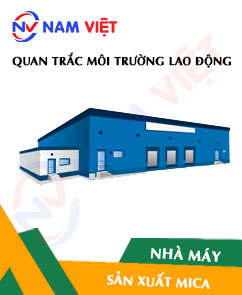
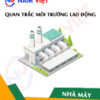
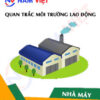
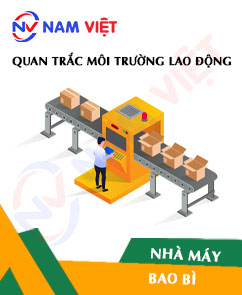




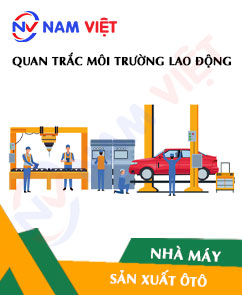

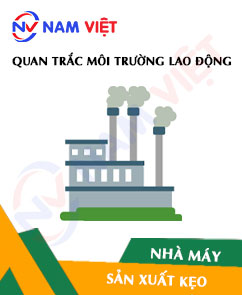
Review Occupational environment monitoring at a mica manufacturing factory
There are no reviews yet.